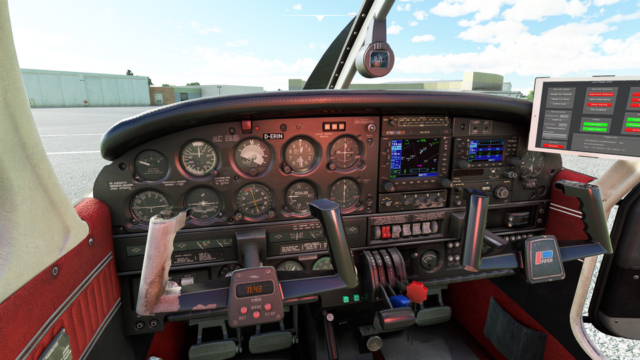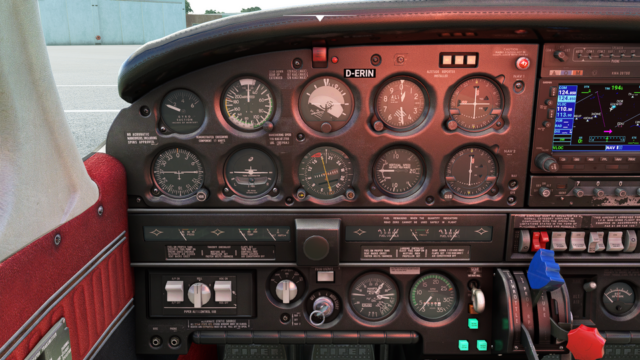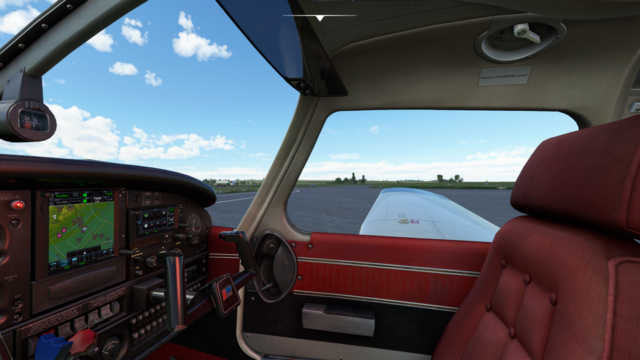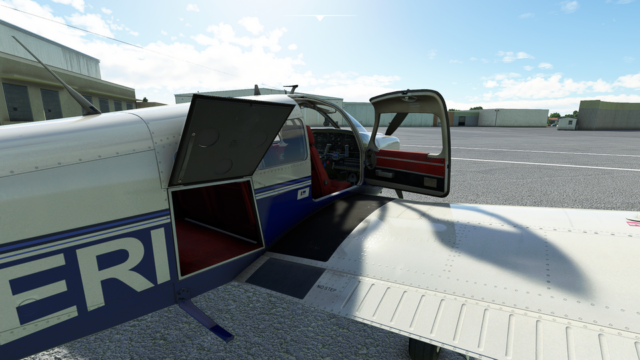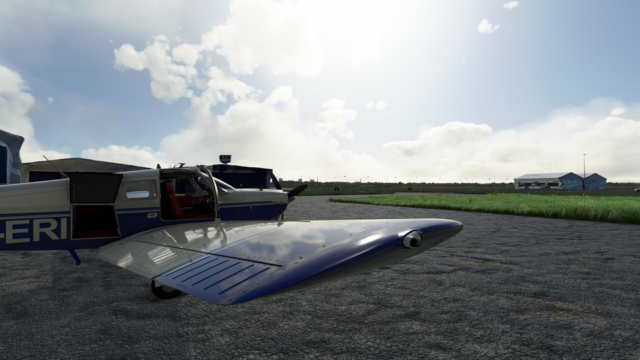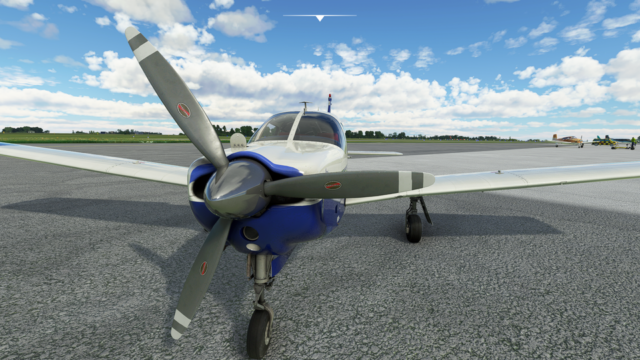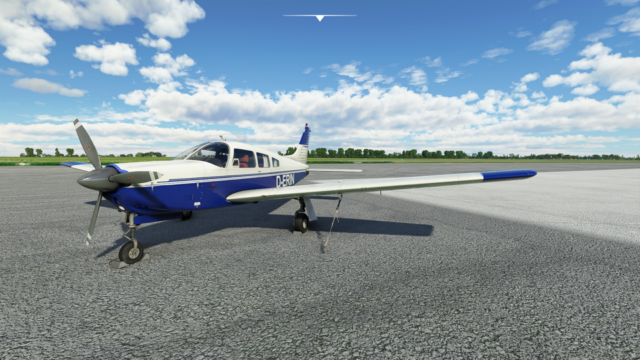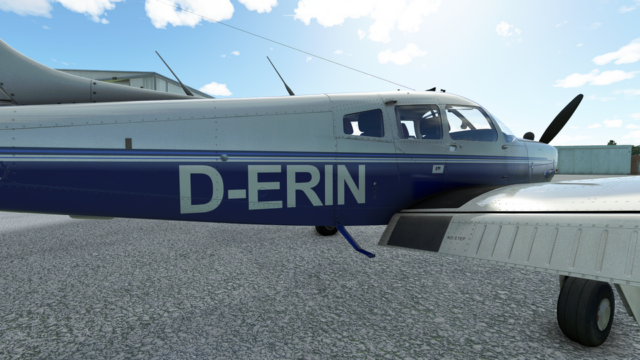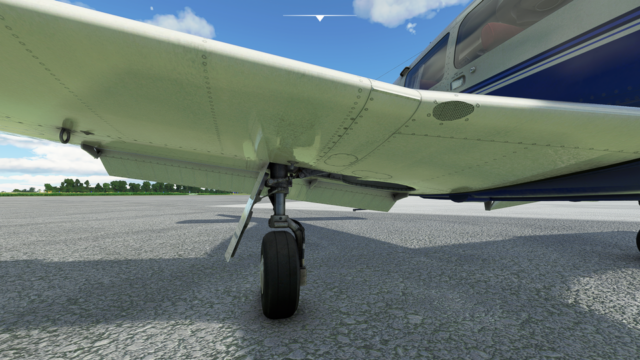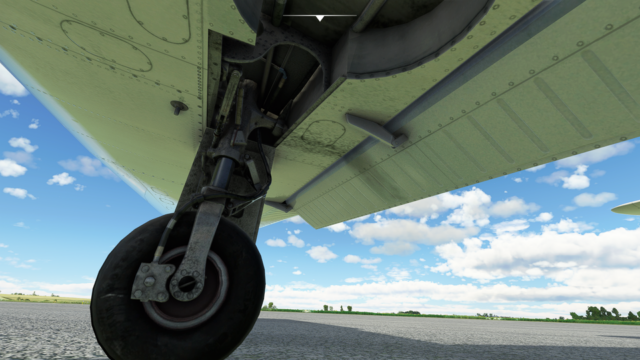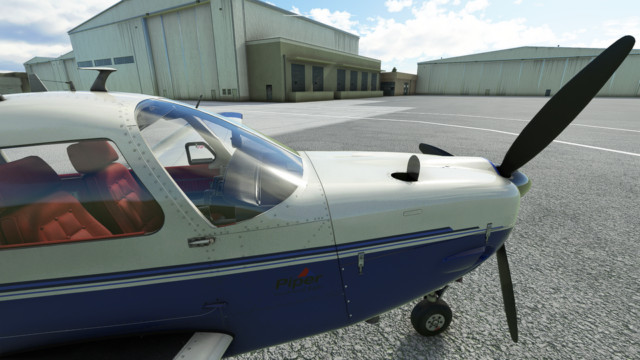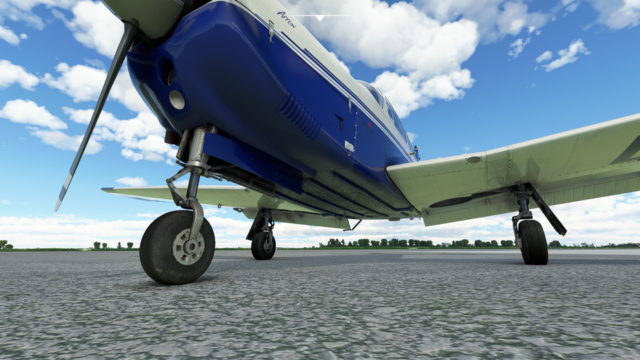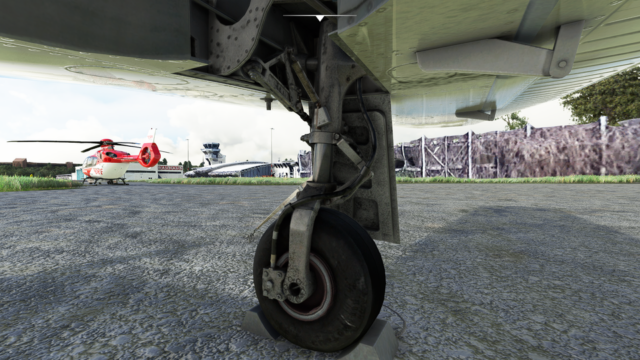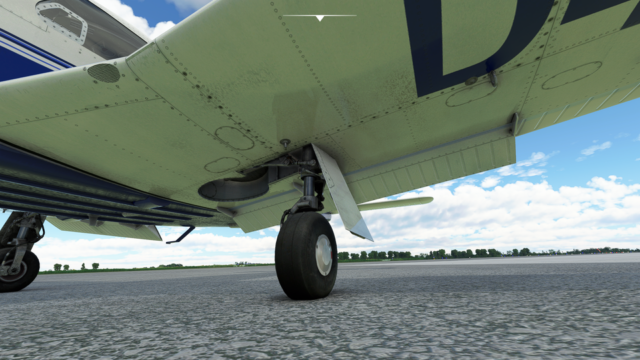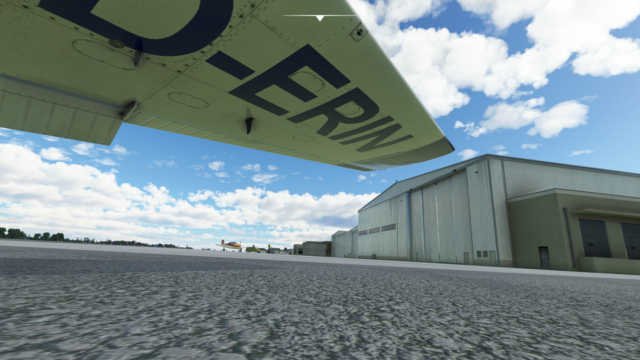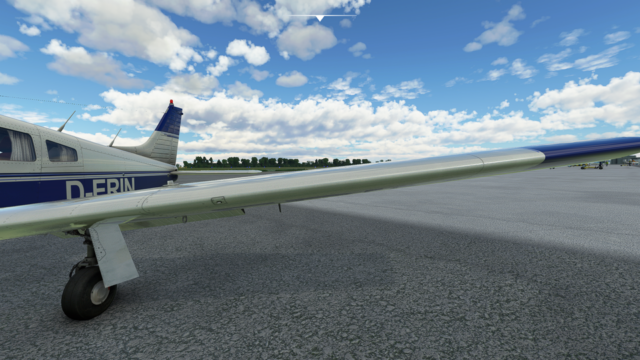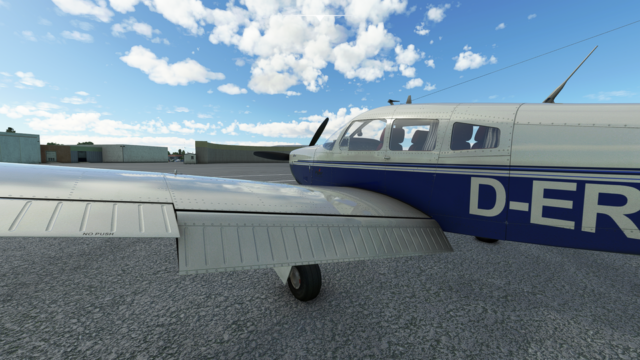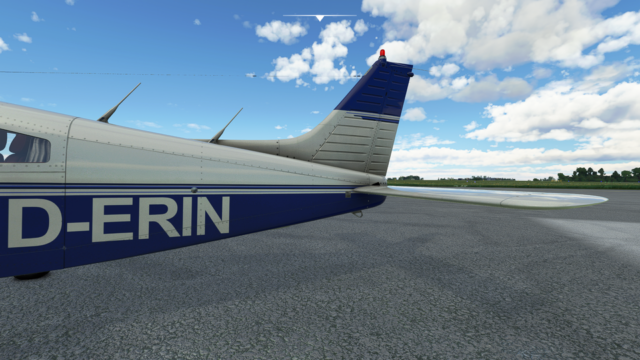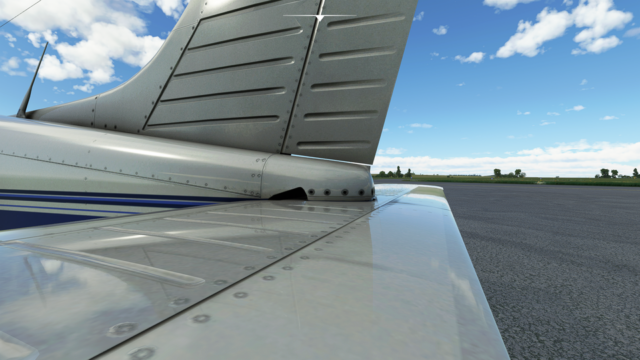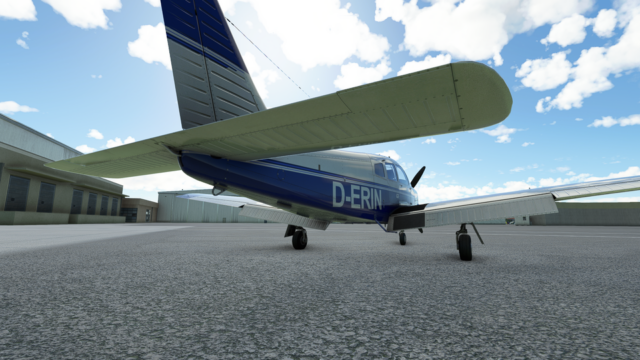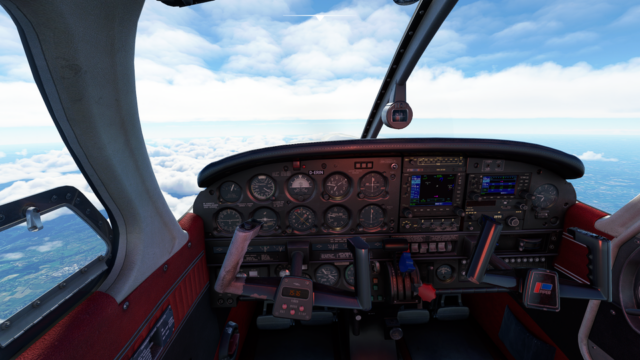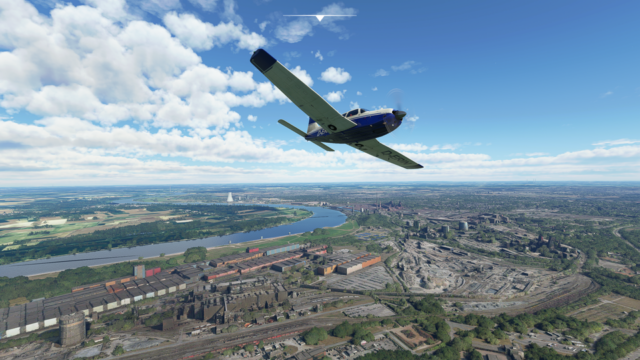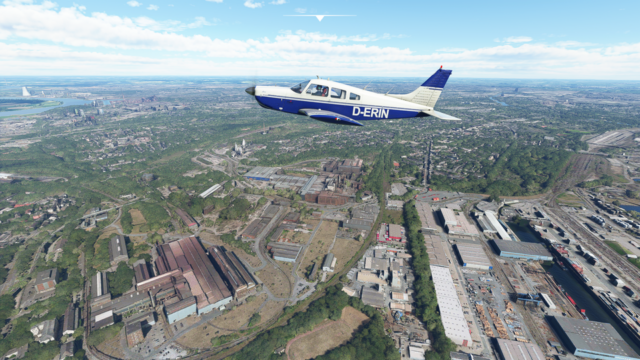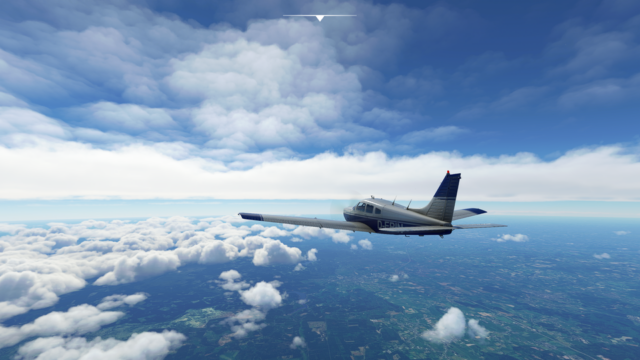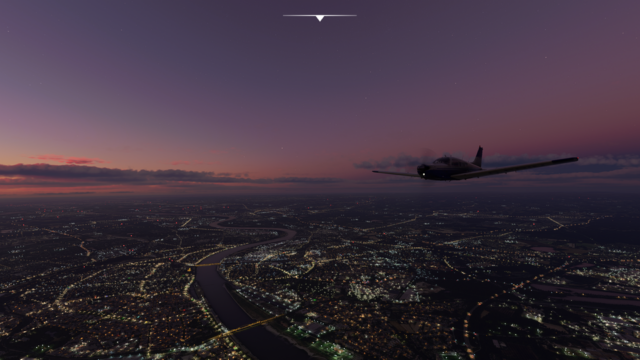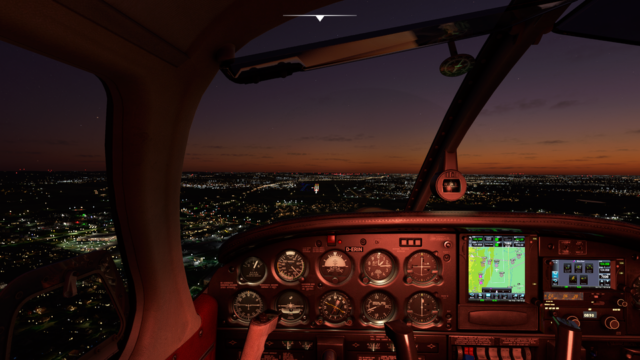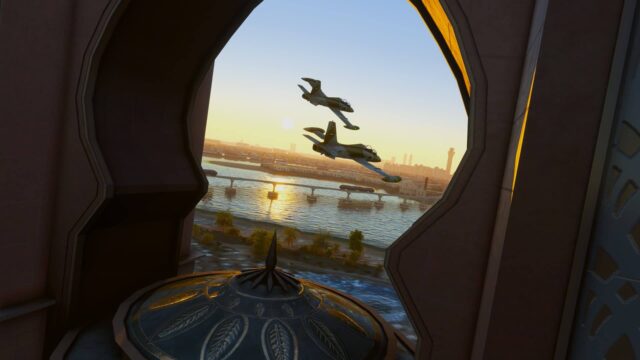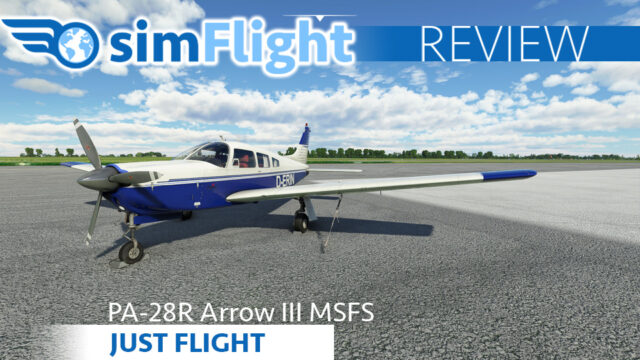
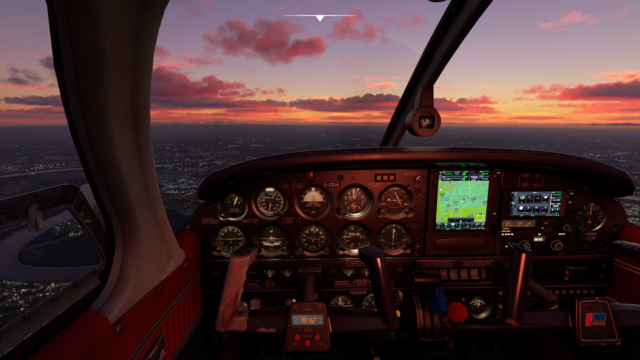
Cessna or Piper … it’s like Apple or Windows … BMW or Daimler … or is it six of one and half a dozen of the other? We Simmers can now also take part in the competition in the MSFS, because Justflight put a P28 Arrow III in our virtual hangar a while ago. Michael Kalff it out …and weighed it up. Cessna or Piper? Read for yourself!
The Original
The Piper PA 28 Cherokee competed from 1960 onwards against the so successful Cessna 172, designed as a good-natured, four-seat, single-engine low-wing aircraft for flight schools, air taxi, business and hobby flying. Originally equipped with 160hp from a four-cylinder boxer engine, fixed landing gear and fixed two-blade propeller, continuous improvements were made in the following decades: more powerful engines (some with turbochargers), retractable landing gear, adjustable three-blade propeller, more optimal wings, lengthening of the cabin for more comfort in the rear seats and a roomier baggage compartment, and of course more and more electronic avionics. The P28 is still being built in the current version “Archer III” and is offered for 400,000 to 500,000€ each. In the meantime, 37,000 of the various versions have been sold, it occupies third place among the most-built aircraft, but number one is still the C172 with 44,000 units.
The Arrow III, introduced in 1977, has a maximum speed of 183kn, a maximum altitude of 16,400ft, a maximum range of 1,800km, a maximum payload of 520kg and a variable pitch three-blade propeller. Both competitors are equipped for IFR, but not for icing. Examples like the model simulated by Justflight from the 70s with avionics of that time and in good condition currently cost 70,000 to 100,000€. So it’s very good that Justflight is not offering us this oldie for “cheap”, but at a much lower price. The fuel consumption of around 45l Avgas100 per hour is also quite expensive in real terms – the litre is €2.40 and it’s just as well that no one is writing us a bill when we simulate! The next few years should see a greater supply of used aircraft of this type as younger generations of pilots take advantage of microlight flying, which is cheaper in more ways than one. The latest P28 generation flies on diesel (1.30€l) and also consumes less (25l/h), but also costs from 400,000€ and upwards when new, the Cessna 172S is also still in production and doesn’t come much cheaper.
During a flight simulator project at the University for Applied Science in Constance in the 2010s, I had the opportunity to fly in a P28 (Arrow II) over Lake Constance and the Alps. The colour scheme of the cabin and the avionics match in every detail, which is why this review is close to my heart, even though it was written late after the aircraft appeared on Justflight. In the meantime, Justflight has also released the PA 28 Warrior II and the Turbo Arrow III/IV, which are available cheaper in a bundle.
Justflight’s model
After buying it for just under 38€, you download an installation package of 815MB from simMarket, for example, which then unpacks into the community folder and takes up a whopping 1.2GB there. In the Windows menu, Justflight appears as an entry under which Paintkit, Manual and Uninstall are accessible. The manual provides an extremely detailed introduction to the technical systems and their handling – many texts are probably taken from the original manual, study level literally. If you want to get to know the technical details behind all the information that is so conveniently displayed in modern glass cockpits, you will find introductory reading on avionics here! The Arrow III is an oldie with a classic clock shop, and really EVERY instrument is explained here in function and use. Checklists for normal procedures and for emergency procedures are integrated, neat! Even the tutorial flight, for which a flight plan is stored, is described handle by handle. For old simmers, this may be as tiring as dialling a telephone, but it is a great way to learn the procedures of flying and far more differentiated than the MSFS flight school: upper level, not kindergarten!
Justflight has added a tablet to the technical antiquities as an EFB, which also controls many simulation functions: co-pilot or not (you can see him/her…he/she also weighs something, but the interaction then goes via the MSFS assistance, whether activated or not), chocks, tie-downs, push bar, doors open and closed, oil level and battery status as well as operating states (cold and dark; ready for take-off; ready for takeoff).
How it looks
In the MSFS, a good appearance is actually already expected with payware – fuzzy textures, wrong proportions… that’s a thing of the past. So the Arrow III stands clear and crisp on the GA parking in Dortmund (EDLW), from where I start the test flight. VFR over industrial landscapes instead of mountain idylls, a completely new discipline … So I get into the cockpit and prepare for take-off. Getting into the P28 is only possible via a single hatch on the “passenger side”: left foot on the catch, left hand on the handle at the top, hold the hatch open with the right hand, pull up, right foot on the step on the wing … and in … and slide over to the pilot’s seat. Point for the Cessna, it is still friendly to less sporty pilots when boarding with one door each on the right and left. The seats are tighter than in the Cessna, especially in the back. In the C172, passengers are a little more comfortable.
On the pilot’s seat you get a real oldie feeling: red seats! Watch-collection! Well-worn controls! Even the curtains on the side windows in the back … lovely! You can literally smell the mustiness that inevitably settles in such a cabin over decades. Battery on… and the cockpit noisily comes to life, that’s how it should be! Visually, it has much more style than the sober Cessna dashboard, sports car versus Beetle. Point for the Piper.
The P28 needs two walkarounds: one electrical (check lights and pitot heating) and then – battery off again for conservation – a second for flight and control surfaces, landing gear, fuselage, fuel and oil. Out for the first tour… with the reverse ritual from before. The first few times you get the order of the steps mixed up and your lower legs in knots.
The lights on the model look a bit sparkly (also later, in the air in the late evening), the landing lights can’t be seen at all from close up, that’s probably an MSFS bug. Unfortunately it is not possible to feel the heating on the pitot tube… only virtually. Visually, the good impression from the cockpit continues outside. Again into the cabin (groan), power supply off again, flaps fully extended (mechanically with a handbrake-like handle between the front seats), open the oil flap at the EFB … and out again for the actual walkaround, which starts at the trailing edge of the wing on the right: flaps, check pins; move ailerons through, check the whole edge for damage … sight wing tip… Check leading edge. This is all well done, if there are still rivet counters among simmers, here they have something to do and will be happy! However, the wing also looks almost brand new … the usual scratches, stains, impacts on the leading edge from swirled up stones, insect impacts… none of that, just a little dent, otherwise everything is like new. Checking the fuel tank on the right is unfortunately not possible (but the cap is there) … crawl under the wing… the drain valve is there (wow), here in real life you check the fuel for condensation in the tank with a special glass. The chassis and its shaft are implemented quite detailed, the pilot checks for signs of leaking lines, how far the shock absorber retracts, the brake discs and pads (unfortunately Justflight’s implementation rather suggests a drum brake, but they are really disc brakes), the skid marks on tyre and rim (the ones on the rim can even be seen). Also nice: the dirt swirled up by wheels under the wing. On grassy fields this is an unpleasant issue (I have cleaned with it more often). At the front of the wing root is an air intake for the cabin, which can be nested by insects during longer periods of standing.
The Arrow III has a handy oil flap, on many other PA28s you have to open the whole engine cowling to check the oil level. That’s not really possible here in the model, but the flap can be opened in the EFB and the oil level can be read there, after all. The check continues at the front of the nose: check the air intakes (also often a nesting place – this time for birds), check the spinner for tight fit, propeller for cracks and damage … and here, too, Justflight has installed a brand new one. Too bad, because especially on the propeller you can really see clear signs of wear. Check the nose gear, this is detailed, and also here the dirt traces from the landing gear on the underbody. Left landing gear, left wing analogous to the right, except that there is a sensor for the stall at the wing edge. Its moving part is tested to make sure that nothing is blocked. Here, too, the tank level and water in the tank are checked, then the fuselage is checked for cracks, at the rear of the tail the wing edges are checked for damage, the control surfaces are checked for movement, the integrity of the bolts, joints and linkages, signs of tailstrike (one usually takes over such a PA 28 from colleagues or club members). On the right side, you also check the fuselage and the baggage door for tight closure and then climb back into the cabin.
Here is a video walkaround around the P28.
How it flies
The real Piper Arrow III combines the good-naturedness of the P28 series with a 200hp engine, controllable pitch propeller and retractable landing gear, i.e. better performance data. Is this reflected in the flight model?
Let’s take a seat in the cockpit and get started: lock the hatch, turn the power and lights back on, select the fuel tank on the left, set the key to START… and the engine starts. Everything is nicely simulated: Intake pressure, EGT, revs, magnetos (at 2,000RPM let first the magnetos 1, then the magnetos 2 ignite alone…prototypically the revs go down by 200), also the rich sound of the engine is a joy, this is neither a hairdryer nor a lawnmower. Obtain clearances and taxi off … line up on the runway, throttle up, revs to 2,500, set trim and flaps, throttle slowly to full and off you go….
As much care as Justflight’s developers have shown with the optics, the flight model seems to me to be less carefully designed: this Piper tends to break away during the run-up. And also the first minute in the air seems unstable. The possible reason for this is that either propeller torque is simulated here, which we don’t usually know so well in the MSFS (and which has a demanding learning curve in FlyingIron’s Spitfire, for example), or it is the behaviour familiar from the MSFS of making starting aircraft nervous (and whether this is realistic is for real pilots to judge). It seems exaggerated to me, but the few take-offs I was allowed to practise myself in real life with microlight aircraft and C172 as well as PA28 or witnessed with other beginners are not a safe reference. In any case, for a “good-natured” machine as payware, I would have expected it to also behave good-naturedly, and not like a diva.
Retract the landing gear, gain altitude and speed, set course, retract the flaps…above 85kn and with the flaps retracted, Justflight’s Arrow finally becomes pleasant to fly. MSFS – the common judgement is right – is the best VFR simulator in the world: with the PA28 it is fun to stay close to the ground and explore 3D cities, industrial landscapes, river valleys, mountain slopes. Thanks to the 200 hp, you can also travel a little faster at 2000 ft than with the C172. Level off, throttle back by a quarter, regulate the revs to 2,250. Sightseeing reveals one main difference to the C172 – as a low-wing aircraft, the wings block part of the view downwards when flying straight. The phenomenon affects the rear seats more than the front ones. PA28 pilots compensate for this by flying more frequently in turns, pointing out that high-winged planes block out the view of landscapes when banked, but for commercial sightseeing, search, photography or measurement missions, the C172 seems better suited (and is used more often for this).
At cruising speed, Justflight’s Arrow III is unobtrusive and easy to handle. The autopilot is rudimentary to the original and can hold a course (magnetically or with VOR), but cannot approach or hold an adjustable altitude. That’s where Cessna comes out on top. For everyday VFR use, this is still good enough, but for IFR, more manual work is required for altitude management. Justflight gives spoiled Cessna pilots a cheat: if you click on the Piper logo at the top of the “Coupler” (which selects whether a magnetic course or a radial is set), the Arrow III holds the current altitude.
I then tested the performance limits of the machine – and there again the attribution “sloppy” comes to mind with the flight model. Stall speed on the original is 60kn (flaps and landing gear retracted) or 55kn (flaps fully out, landing gear down), Justflight’s Arrow III is almost unstallable (like an AN2): it only just picks up nose down and speed again at 45kn. It’s difficult to even trigger the stall warning. The real PA28 is not that good-natured after all, I have experienced it differently in real life.
When climbing, the plane benefits from its 200 hp, retractable landing gear and variable pitch propeller. It doesn’t climb fast, but it climbs quickly at 750ft/min, and only at 10,000ft does it start to gasp for air and want to climb less than 500ft. The real manuals show 15,000ft as the maximum cruising altitude and 16,400ft as the service ceiling. I suspected that the engine would then run out of power due to insufficient compression. I continue to climb at 300ft/min … Justflight lets its Arrow III climb to 18,000ft! Above that, it simply doesn’t climb any further. The engine is already maxed out, but it still delivers power, 100kts can still be flown straight ahead (in turns, of course, it drops). That doesn’t feel right at all. Well, you could say, what does a PA 28 want at such altitudes? Even in the Alps, VFR is only possible up to 13,000ft, and for IFR the band is sufficient up to 15,000ft. Anything above that is a “forbidden zone” for the Arrow anyway. But I am irritated by such inaccuracies in such a high-priced model.
So let’s bring the Piper back into the green zone… VFR at 5,000ft. Now I check whether and how it ices up – in MSFS, instead of a beautiful late summer day with lots of blue sky, the worst icing situation can be generated in seconds. Justflight’s Arrow takes it very calmly – icing on the windows only very moderate, on the surfaces not at all. Effect on flight characteristics: zero. Justflight’s advertising announces an icing model – but there is nothing at all.
Now I try the autopilot with radio navigation, and yes, it catches a radial and can fly it, and yes, it can also do ILS approaches to the extent that it catches and holds the landing course. You have to fly the glide path manually yourself.
Justflight has installed a stone-age Garmin (Garmin 100) in the old bird, which is really something for oldie fans or veteran pilots to remember: it can store waypoints (and then also fly the flight plan GPS-controlled with the autopilot), displays distance and direction in digits, similar to a DME, but graphic flight path displays did not exist back then. Alternatively, a GNS 530 can be integrated, which was built into many standard FSX aircraft, perhaps that’s why Justfllight spares any instructions on its use, unfortunately I could do little with it (that’s how long ago FSX was). So that young users are not left naked, Justflight also allows them to download the GTN 750 (freeware or payware from PMS50) and integrate it into the PA28. With the freeware, a few basic functions are available – and I have to admit: I am already so used to this kind of navigation support (after all, I have been using it since FS4) that I find it much easier to use the GTN 750 than the old stuff: orientation; flight plans; route changes … it is all much easier the more modern / graphical the device. By the way, for the high initial price, Justflight could have built a licensed version of the GTN 750 into the Arrow III, instead of making the users download, install and possibly even pay again themselves. The G 1000, which is built into almost all flying material in the MSFS anyway, would also have been a good choice. The two devices installed by Justflight are not a serious offer for GPS navigation.
We flew west to where the Ruhr flows into the Rhine, marvelled at the industrial landscapes of the port of Duisburg Ruhrort, turned south along the Rhine to Cologne, then west to the Hambach open-cast mine, and then northwest back to land in Dortmund. Standard manoeuvres with the PA28 are “not a thing”, turn, climb, descend, it does it quite civilly. If you are a number of miles away from the airport, the autopilot also dutifully catches the ILS signal of RW 24 and holds the course … It can’t do that too close to the airport. Holding the landing course and glide path with the VOR-ILS “crosshairs” brings back many memories. On the last metres of the approach you have to be careful not to get below 75 knots, even with the flaps fully extended, otherwise the Arrow reacts in a bitchy way – it sags, breaks away… With more than 75 knots it lands decently. I don’t know this behaviour from real life either.
Roll out, taxi back, park… it was nice! Here is a Youtube flight training on real P28, where you learn the tricks for the Arrow III. And on Flightsim.to you can find 180 liveries.
Conclusion
Cessna or Piper? If you want to learn more about flying and be challenged as a pilot, the Piper is more fun. The stylish cockpit of the Arrow III also beats out a C172. The Arrow III’s equipment makes it more agile than a C172. For sightseeing – and in real life for passengers – the Cessna is more comfortable (unless you have luggage – the Arrow III offers more space and payload).
Justflight’s Piper Arrow III comes solidly designed, there is nothing to complain about in sound, model and textures, especially the cabin with its oldie cockpit creates an authentic atmosphere. Justflight presents its Arrow II as “study level”. This is true for the manual and the old-fashioned avionics, but not for the carelessly designed flight model and the “system depth” (in my eyes A2A is still ahead with its GA planes, unfortunately not yet available in MSFS). Nevertheless, the aircraft is fun, for “normal procedures” in its biotope (VFR and IFR short-haul) it is a great alternative in the MSFS hangar. For this performance one has to pay a lot of money, others offer comparable add-ons for almost half the price.
Info
| Pro | Contra |
| Attractive model, stylish cockpit Delicacy for oldie fans also with regard to avionics Common pattern in real life, missing in MSFS Manual on study level Easy access to functions via EFB Rich sound | Inaccurate flight model that does not resemble the real thing Lack of modern GPS navigation with full functionality High price |
| Buy | Test System |
| SIMMARKET Developer: Justflight Price: just under 38 € | IntelCore i5-10600K CPU @ 4.10GHz GeForce RTX 3070, 8 Gb Windows 10×64, 16 Gb main memory Various SSD |
Dr. Michael Kalff translated by deepl.com


